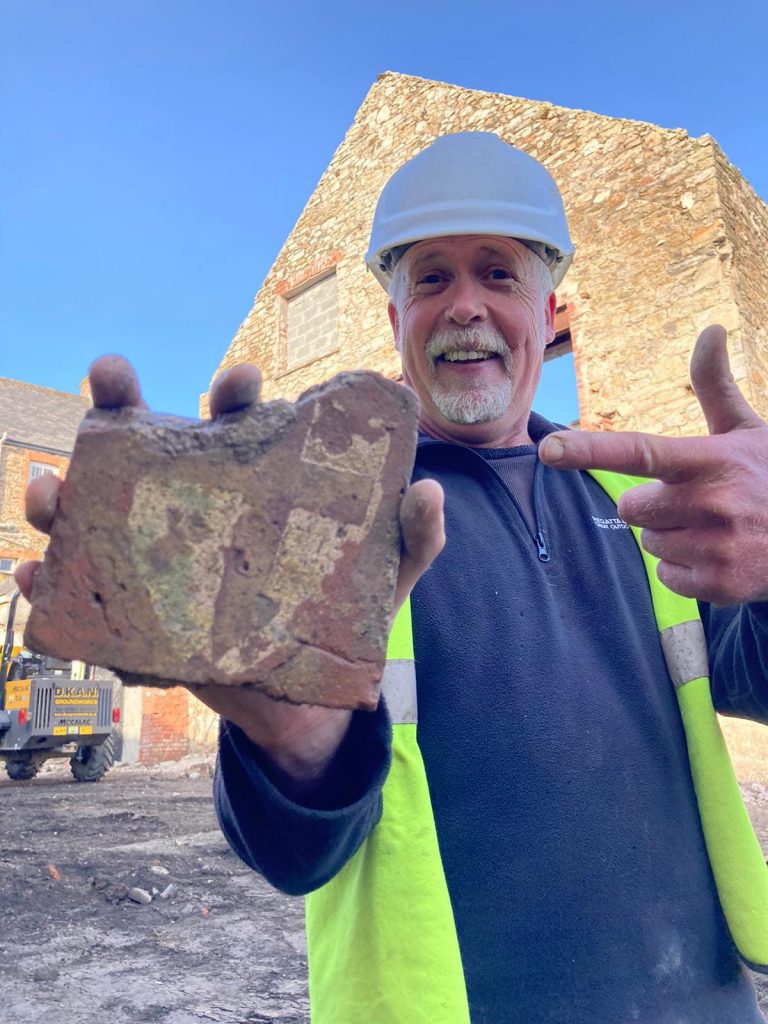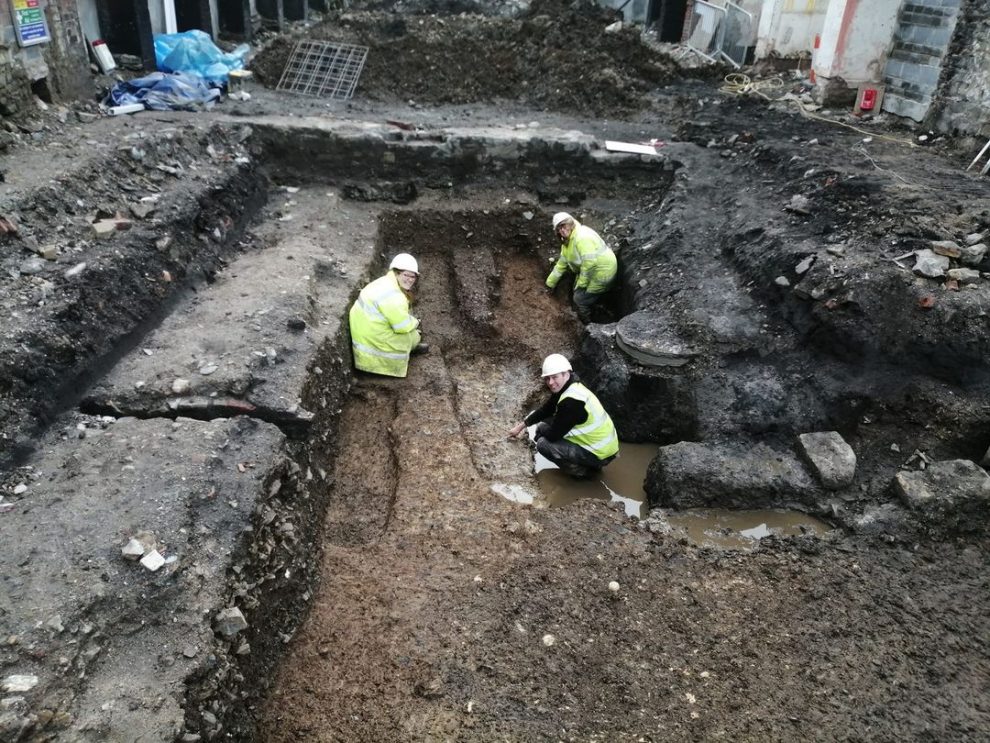ARCHAEOLOGISTS in Haverfordwest have unearthed the remains of 17 skeletons.
The body remains, according to the Dyfed Archaeological team, were burials associated with the mediaeval Friary of St Saviours.
The discovery came during the demolition of the former Ocky White’s store.
Plans to rebuild the building into a three-story food emporium with a bar and a rooftop deck prompted the exploration.
Tom Jamieson, a site supervisor, said: “It gets exciting when you start finding things.
“[We] did an initial check last October with the site simply covered by the remains of a demolished shop. But an exploratory trench found just one medieval tile which gave us hope. It showed there was evidence of an earlier medieval period under all this.”
Archaeologists dug excavations after discovering the tile and found walls, drains, and high-quality floor tiles believed to be from France.

Measuring an estimated 40m long and 12m wide, it is believed the Friary occupied a riverside site roughly 200m long.
The Friary was established on an earlier site but moved to this site in Haverfordwest in 1258.
It was home to eight Blackfriars, who became immensely wealthy thanks to gifts from landowners, lords, and royalty.
Henry VIII’s decision to dissolve the Friary in the 1530s may have been influenced by their wealth.
The Friars’ mission was to preach and help the poor and sick.
“The site is like a layer cake,” explained another site supervisor, Andrew Shobbrook.
“There were remains of the former shop, evidence of an iron foundry and below that the remains of the Friary.”
The skeletons found were buried in shrouds, and one shroud pin has been unearthed.
The remains will be scientifically analysed and then re-buried in consecrated ground.
The project began in February and is due to complete in June. The archaeological team expects to have dug down to the original gravel up to a depth of 2 metres.

















